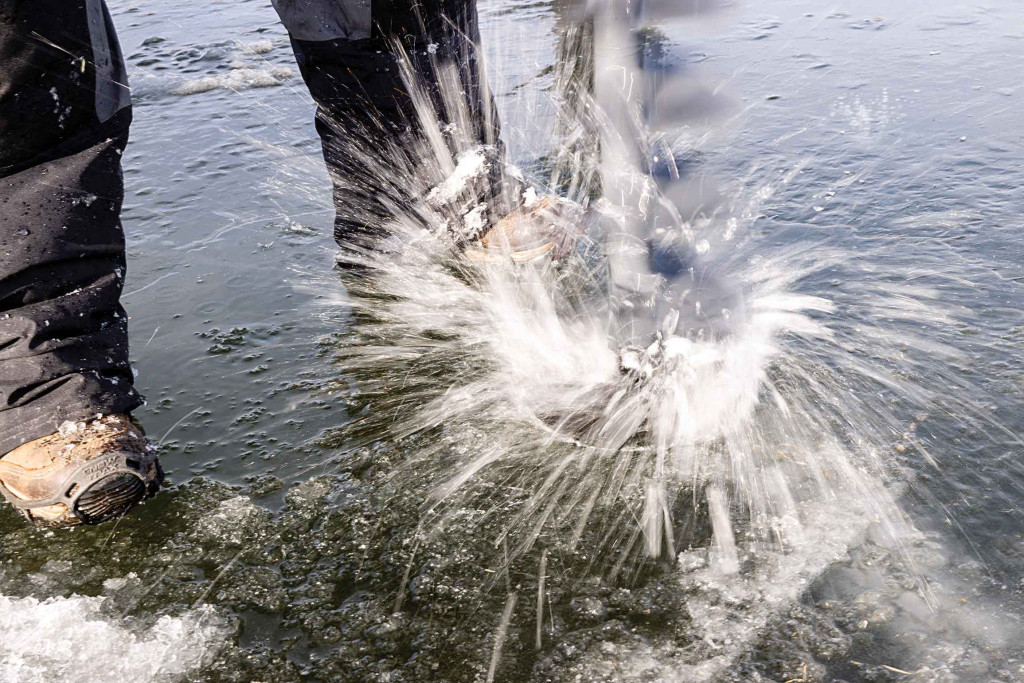
By Jeff Kurrus
Staring into an 8-inch hole in the ice, your eyes following the thinnest fishing line you’ve ever seen, might be the most addictive activity on the planet. So addictive, in fact, that a stopwatch is nearly as important to your fishing success as your rod and reel.
Using this uncommon ice fishing device, an angler can assure that they will in fact move when the fishing slows. Set it for 15 minutes when fishing new water. If there are no strikes, or you don’t see marks on your sonar, change locations.
Here are a few other tips to increase your efficiency on the ice.
Two-Person Teams
• One cuts a set of holes – 20 to 30 is a fine starting number — and the other person lowers the sonar transducer into the water. If fish are marked, kick away the snow cone of ice from the top of the active holes so these spots can be quickly spotted again.
• Share Ideas – You should know how the person beside you is fishing — from depth to lure to action. It’s also not a bad idea to ask strangers fishing nearby. The ice fishing community, at large, is friendly. I’ve never run into a group of anglers unwilling to share information on the hard water.
• A New Person – Quite often, it’s to your advantage to take a new person ice fishing. They’ll try things you won’t. Last season, toward the end of ice, a relatively new ice angler suggested we look at a spot in the middle of a lake.
While I explained we were nowhere near any sort of underwater structure, he persisted. Two limits of panfish and a monstrous channel catfish later, I could only tip my cap. With a stopwatch in hand, every part of the lake is worth exploring if the fish are slow.
